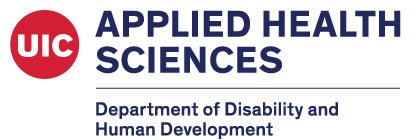By LEND Trainee Monica Moy
I think that most of us, at some point in our lives, have heard the proverb “With great power
comes great responsibility.” Popularized by the Spider-Man comics, this quote’s main themes
have cropped up in legends, parables, and philosophical musings throughout history. From the
legend of the Sword of Damocles in 1st century BC to a decree made by the French National
Convention in 1793.
While this quote is most well-known for its use in Marvel’s Spider-Man comics, I have found it
increasingly relevant as I learn more about disability rights on a national and global scale. My
experiences in LEND over this past year have taught me the value in being willing to stand up
and take responsibility in advocating for the things you are passionate about. For the majority of
individuals in LEND, I’d hazard a guess and say that we are passionate about disability rights.
Going through the LEND program has vastly increased my knowledge base of disability, and to
reference another well-known quote, “knowledge is power.” This saying was coined by Sir
Francis Bacon in 1597 in his work, Meditationes Sacrae, and I believe that in today’s society, it
references the importance of knowledge in influencing decision making and policy
implementation.
On a global scale, America (and the global North as a whole) undoubtedly wields a great deal of
power and thus holds a great deal of responsibility when it comes to the production of disability
theories and the fight for disability rights. However, there is a vast imbalance between writings
about the experience of disability in the global North versus the global South. The North
produces the majority of ideas and knowledge within the field of disability studies and imposes
this knowledge on the South, creating a form of modern scholarly colonialism which fails to fully
take into account the experiences of the over 400 million disabled people living in the global
South (Meekosha, 2011). As an American citizen and an individual passionate about disability
rights, I believe that it is our responsibility to use the power and privilege of my position to help
contribute to the intellectual decolonization of the realm of disability studies, and I could
encourage anyone else passionate about disability rights to do the same! There is certainly
much work still to be done in striving for disability rights here in the U.S., but that does not
mean that we should not also strive for disability rights elsewhere in the world. Disability is a
global experience, but it is not universally understood, and as proponents of disability rights, I
believe that we have a moral responsibility to continue our advocacy by acknowledging the
legitimacy of the experiences of disability in the global South.
This is a topic I am incredibly passionate about, and I know that I have only barely scratched the
surface of it. If you are interested in engaging more with this topic, I highly recommend checking
out the article, “Decolonising disability: thinking and acting globally” by Helen Meekosha.
Meekosha, H. (2011). Decolonising disability: thinking and acting globally. Disability & Society,
26(6), 667-682. https://doi.org/10.1080/09687599.2011.602860

















